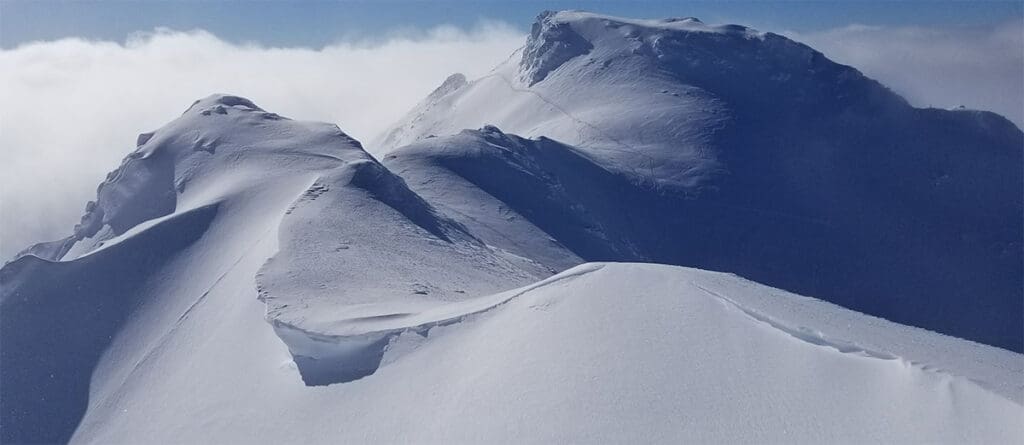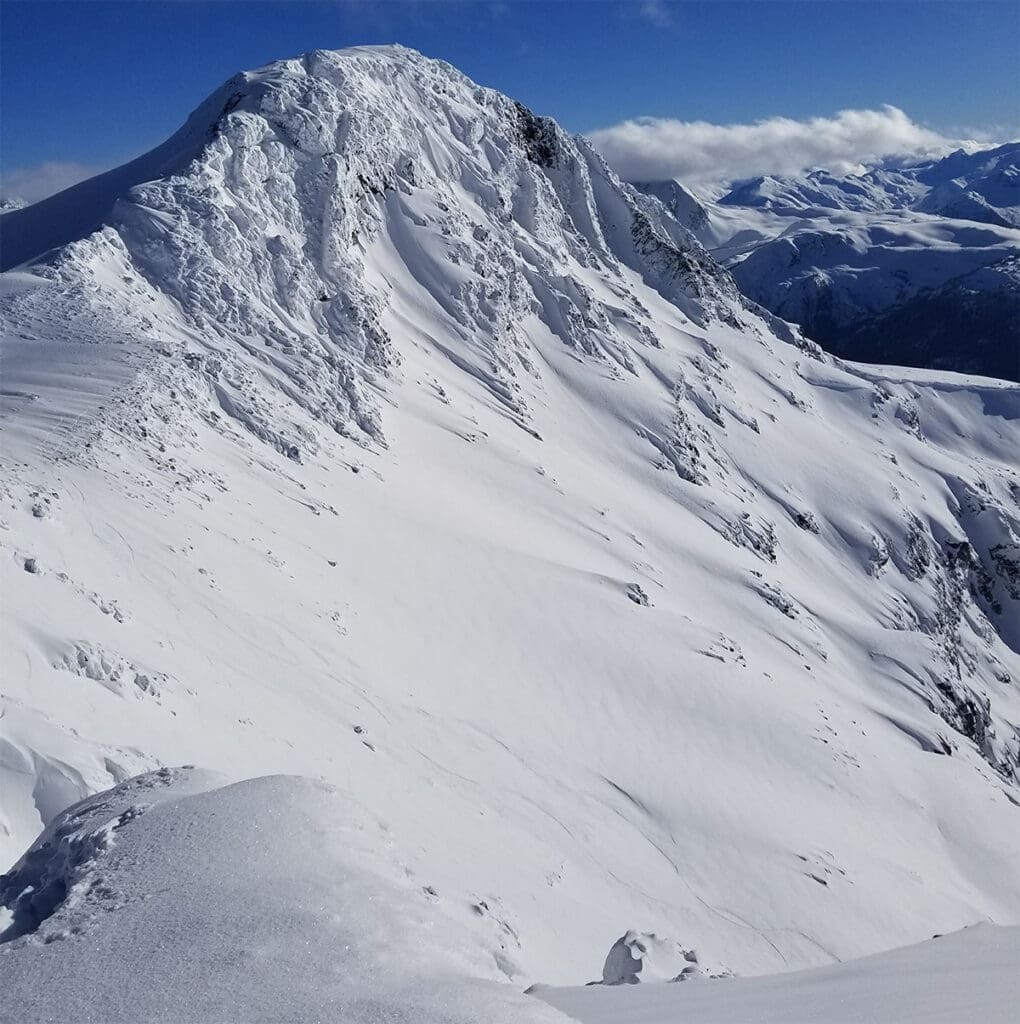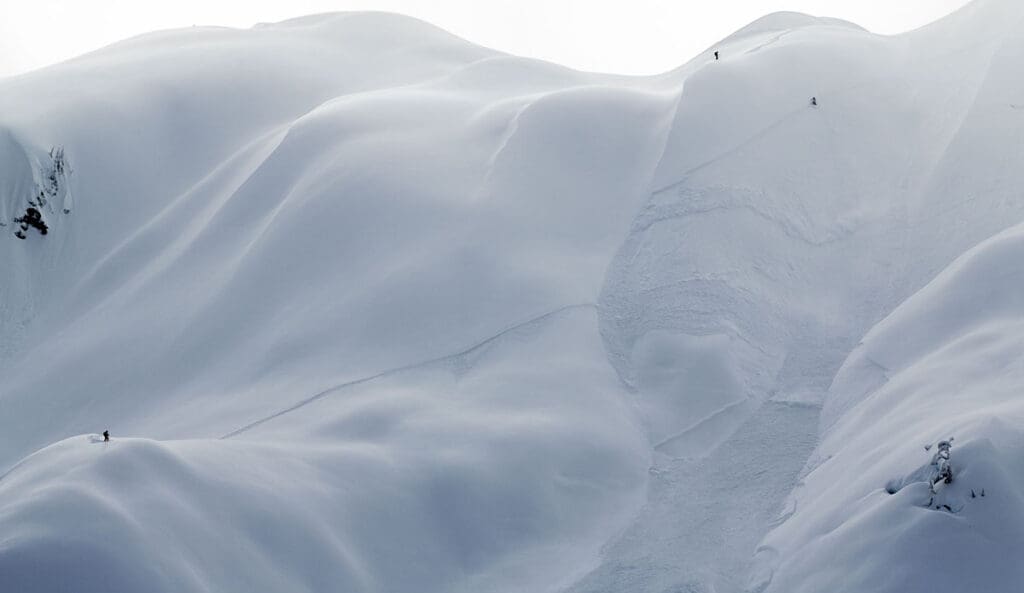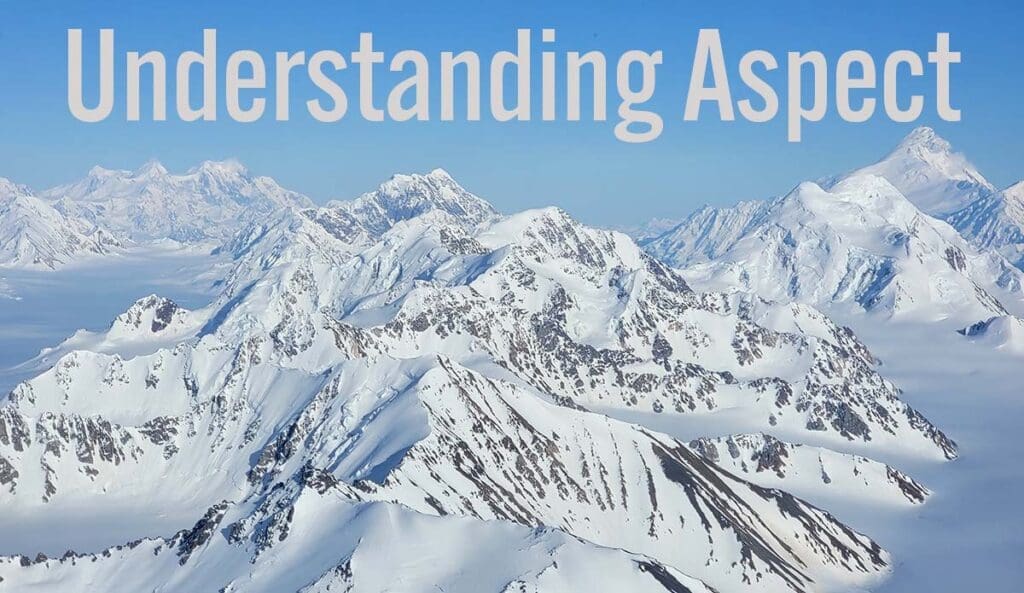Why Wind Is a Big Deal For Avalanche Safety
Of all the variables that can lead to an avalanche, wind might be the most overlooked risk factor. People tend to put a lot of emphasis on fresh snowfall—which is a huge factor—but the wind can be a bit more uncertain if you don’t know what you’re looking for.
In fact, wind can be more influential than snowfall when it comes to avalanche risk. You might not see it happening, but the wind is always working: moving snow from one aspect to another, building slabs, and forming cornices.
Understanding how wind interacts with terrain is a key skill for predicting avalanche-prone areas before you even strap in.

Key Concepts to Understand
There are a few terms to understand when studying wind for avalanches. Here are a few key things to know as a baseline:
1. Wind Scours and Loads
When wind hits a slope, it strips snow from the windward side and deposits it on the leeward side.
- Windward = scoured, firm, crusty
- Leeward = deep, soft, slabby, dangerous
The deposited snow doesn’t bond well to what’s underneath, especially if it forms a wind slab—dense, cohesive layers that can break easily under a rider’s weight.
2. Look for Signs of Loading
Reading the wind’s direction and observing how it moves snow is crucial. Pay attention to:
- Cornices forming on leeward ridges
- Rippled textures or drifts on snow surfaces
- Tree flagging (snow blown off one side of trees)
- Cross-loading in gullies or couloirs (where snow blows across, not just down)

Wind slabs can form on slopes that didn’t even receive new snow, just from relocation by the wind. This was unfortunately what led to the avalanche death of Dave Henkel, a 20+ year veteran of the backcountry when he went to a familiar zone that had been cross-loaded. This is also a prime example of the “familiarity trap” in human errors. So just because you’ve been somewhere doesn’t give you a free pass to not be vigilant.
3. Cornices Are Not Your Friends
Cornices—those overhanging snow ledges on ridgelines—are one of the deadliest features in alpine terrain.
- They can collapse under your weight (even standing far back from the edge)
- They can trigger avalanches below when they break off
- They often obscure safe route options
Avoid traveling below or directly on top of cornices unless you’ve thoroughly assessed the risk.
Field Tips For Understanding Wind
✅ Always check the wind direction in recent weather reports
✅ Use terrain clues to identify scoured vs. loaded slopes
✅ Avoid leeward convexities, gullies, and unsupported slabs after wind events
✅ Stay well back from the edge when traveling on ridgelines with cornices
Key Takeaways
- Wind can move more snow than storms and do it silently.
- Leeward slopes are prime zones for unstable wind slabs.
- Cornices pose double danger—collapse + avalanche trigger.
- If there’s wind loading in the forecast, reconsider your route.
Resources For Wind and Avalanche Forecasting
Check out some of the best wind forecasting (and it’s free!) at windy.com. For the best avalanche forecasts in Canada, visit avalanche.ca.
More information on Wind Loading
Up Next:
Avalanche Awareness 101 – Aspect
We’ll explore how the direction a slope faces affects snow stability, sun exposure, and route planning.
Subscribe to the Newsletter
Get updates, mountain safety tips, and course announcements.

